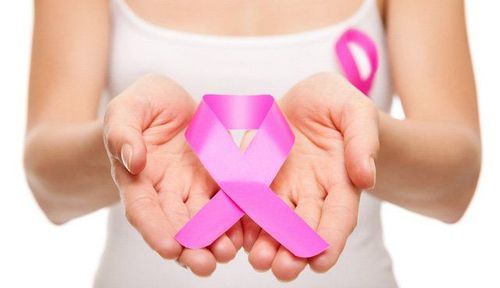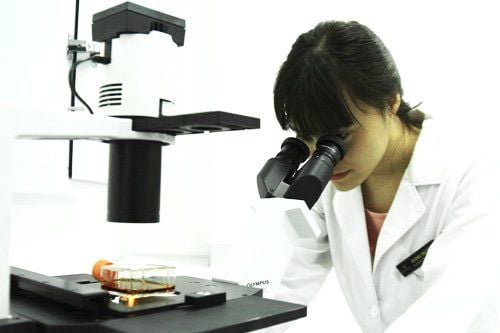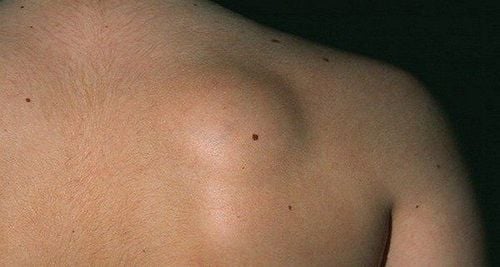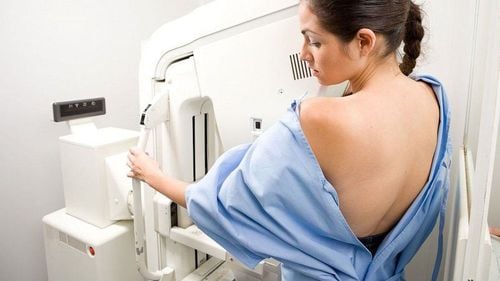This is an automatically translated article.
The article is written by Dr. Nguyen Thu Huong - Deputy Head of Diagnostic Imaging - Cancer and Benign Breast Disease Screening Unit - Vinmec Times City International Hospital.
Risk factors increase your chances of getting breast cancer, but having multiple risk factors does not mean you will definitely get the disease. Some risk factors you cannot change, such as age, genetics, and may increase your risk of breast cancer.
Here are breast cancer risk factors that you cannot change:
1. Being a woman
Female gender is the main risk factor for breast cancer , men can also get breast cancer, but it occurs mostly in women.
Trắc nghiệm: Những lầm tưởng và sự thật về ung thư vú
Ung thư vú có tỷ lệ tử vong cao nhất ở nữ giới khiến họ rất lo sợ bản thân mắc phải căn bệnh này. Tuy nhiên, không ít chị em có những hiểu biết thái quá về ung thư vú. Thử sức cùng bài trắc nghiệm sau sẽ giúp bạn loại bỏ được những nghi ngờ không đúng về căn bệnh này.
Bài dịch từ: webmd.com
2. Age
As age increases, the risk of breast cancer increases, most breast cancers are found in women aged 55 and older
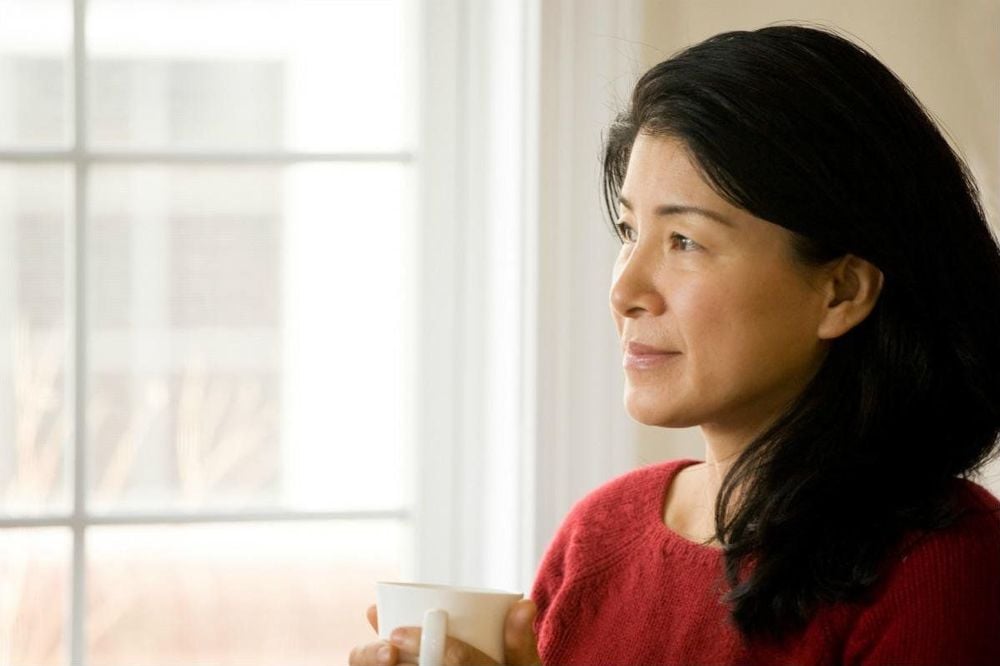
3. Inheritance of cancer genes
About 5-10% of breast cancers are thought to be hereditary, as a result of the direct inheritance of mutated genes from parents.
BRCA1 and BRCA2: The main cause of hereditary breast cancer is mutations in the BRCA1 and BRCA2 genes. In normal cells, these genes help to make proteins that can repair DNA, mutations of these genes can lead to the formation of abnormal cells that cause cancer. If you carry these mutated genes from your parents, your risk of cancer is higher.
On average, a woman with the BRCA1 or BRCA2 gene has a 7 to 10 times higher risk of developing breast cancer than the general population when she is younger than 80 years old. This risk is also affected if there is a higher number of people in the family with breast cancer.
Women with either of these mutations are often diagnosed with breast cancer at a young age and often have bilateral breast cancer.
Women with either of these genes also have a higher risk of ovarian cancer and some other cancers. Men who have inherited this gene have a higher risk of breast cancer, prostate cancer, and other types of cancer.
In the US, this mutated gene is common among Jewish people (Western Europe), however anyone can carry this gene. Genetic testing can be done to detect mutated genes. This is a method of choice for women to detect mutated genes and assess risk, especially those with a family history. Genetic testing is necessary, but not all women need testing, and weighing the pros and cons requires careful assessment.
4. Have a family history of breast cancer
It is very important to note that most women with breast cancer do not have a family history, but those with a family history have a higher risk of breast cancer.
Having an immediate family with breast cancer (mother, sister or daughter) often doubles the risk, having two people in a direct family often triples the risk.
Women whose father or brother has had breast cancer have a higher risk of breast cancer.

5. Personal history of breast cancer
Women with breast cancer in one breast have a higher risk of developing breast cancer on the opposite side or in the other part of the breast.
6. Race
In general, Caucasian women have a slightly higher risk of developing breast cancer than American women, although recently there is not much difference. At the age of <45 years, breast cancer is more common in American women, and mortality is also higher in these women. Asian women generally have a lower incidence and mortality rate from breast cancer. Different types of breast cancer also have different incidence rates by race, for example, women in the Americas are less likely to have triple-negative cancer.
7. Height
Many studies have found that tall women have a higher risk of breast cancer than short women. The cause is currently unknown, and is thought to be influenced by a number of factors such as early puberty, hormonal factors, genes or excessive nutrition.
8. Have solid mammary glands
The mammary gland is composed of adipose tissue, glandular and fibrous tissue. Breasts appear dense on mammograms when there is more fibroadenoma than fat. Women with dense breasts are 1.5 to 2 times more likely to develop breast cancer than women with average breast density. Moreover, dense breasts also make it difficult to detect breast cancer. Therefore, women need to understand the density of their breast parenchyma to discuss with their doctor to choose the appropriate screening method.
There are many factors affecting the density of mammary gland parenchyma, such as age, menopausal status, use of drugs such as hormone therapy, pregnancy, genetic factors.

9. Have benign tumors
Women diagnosed with benign tumors have a higher risk of developing breast cancer. Some cases are strongly associated with the possibility of breast cancer. Usually these tumors are divided into 3 groups, depending on the risk of effects.
Non-hyperplastic tumors : Usually do not increase the risk of breast cancer, if present, very little, including:
Fibrocystic breast (fibrocystic change of the breast) Mild hyperplasia Glandular disease (non-fibrotic) Phylloblastoma (benign) Solitary papilloma Fat necrosis Tubular dilatation Peritubular fibrosis Apocrine-secreting metaplasia Calcification of epithelial origin Other tumors (lipoma, extra histiocytoma, hemangioma) neurofibromatosis, adenomyoma...) Mastitis (infection of the breast) is not a tumor and does not increase the risk of breast cancer Typical group of hyperplastic tumors (with abnormal cells): In this case there was hyperplasia of the epithelial cells in the ducts and lobules, but these cells were not irregular in shape. This condition carries a slightly increased risk of breast cancer. Includes:
Typical ductal hyperplasia Enlarged fibroadenoma Multifocal papillomatosis Radiant scarring Group of atypical hyperplastic tumors: In this case the cells are hyperplastic, the shape of the cells changes, These include:
Atypical ductal hyperplasia Atypical lobular hyperplasia Women with these lesions are 4-5 times more likely to develop breast cancer than normal. Simultaneously having this lesion and having a family history makes the risk even higher. Lobular carcinoma in situ (LCIS): Cancer-like cells that develop in the lobules that secrete milk, but do not grow through the walls of the lobules. LCIS does not mean cancer, because if left untreated, the lesion will not develop into invasive cancer. Women with this type of lesion are 7-12 times more likely to develop breast cancer than normal.
10. Early menstruation and late menarche
Menstrual period earlier than 12 years old and menopause later than 55 years old, due to increased duration of estrogen and progesterone hormones, there is a slight increase in breast cancer.

11. There is irradiation of the chest area
Women who have received radiation therapy to the chest site for other cancers such as Hodgkin or non-Hodgkin have a significantly higher risk of developing breast cancer. The increased risk depends on the age of irradiation, during puberty and development, the risk is higher, but when 40-45 does not cause an increase in breast cancer.
In January 2020, Vinmec Health System established a Screening Unit for Cancer and Benign Breast Disease to turn Vinmec Times City International Hospital into a Center for screening, diagnosis, treatment, and consulting on cancer. The leading modern and comprehensive breast cancer and benign breast diseases in Vietnam.
The Breast Cancer and Benign Disease Screening Unit is the place to deploy a uniform and standardized breast cancer screening model with a team of specialized doctors and a modern machine system that fully meets the needs of the patient. international standards in screening.
Counseling on breast cancer, benign breast diseases, screening methods, clinical examination and instructions for breast self-examination for clients; Screening, diagnosing breast cancer and benign breast diseases through the means of mammogram X-ray, breast ultrasound, breast MRI, PET/CT; Implement interventional techniques under the guidance of images such as: cell puncture, biopsy, vacuum aspiration, cyst destruction, needle placement under the guidance of X-ray, ultrasound; Participate in multi-specialty consultations, coordinate with oncology centers in monitoring after breast cancer treatment. To book an appointment, you can go directly to the Breast Cancer and Benign Disease Screening Unit at Vinmec Times City International Hospital or contact the Breast Clinic's hotline: 0910.704.068.





